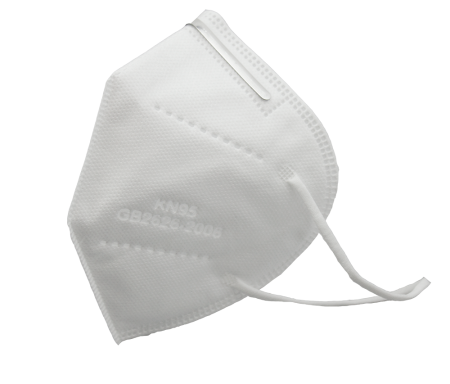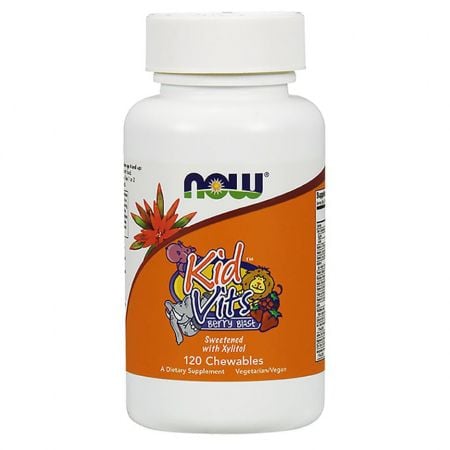
Getting ready for the new school year is about more than school supply shopping. It might seem fairly obvious but it’s worth emphasizing that healthy students are better learners. To help parents out, we've made it simple by breaking things down into these 10 health tips for back-to-school success.
1. Choose the Right Backpack
Textbooks, notebooks, tablets, laptops: Students are carrying more on their backs than ever. With this in mind, choosing the right backpack is one of the most important health concerns for students. The wrong backpack can lead to discomfort and back pain.
When choosing a backpack for your child, look for one with wider, padded shoulder straps. This will distribute the weight more evenly and will be more comfortable to wear as a result. Sizewise, the backpack should sit just below the shoulder blades and end right at the waist. Because children grow quickly, it may be tempting to get a larger backpack figuring they’ll grow into it, but it’s important to get a bag that fits correctly now to protect against back pain.
Other backpack tips:
- Teach children to use both straps. Slinging the bag over one shoulder or wearing only one strap can cause strain, pain, and muscle imbalances.
- Pack heavier items toward the center of the bag.
2. Reinforce Good Hygiene Habits
Proper hygiene is one of our best defenses against bacteria, germs, and viruses which are all over classroom surfaces. Children should be reminded to wash their hands often and properly. Proper hand washing has three key requirements. It should take at least 20 seconds with warm soap and water, and finish with thorough rinsing and drying.
In the last two years, coughing and sneezing are a bit more at the top of mind. Help your child learn not to cough and sneeze into their hands but into the fabric of their sleeve or a tissue.
3. Set and Enforce a Strict Bedtime
A healthy night’s sleep is essential for every person but even more so for children as they’re still growing and developing while dealing with the rigors of education. Set a strict bedtime that allows for sufficient sleep time. Preschoolers need 10-13 hours of sleep, 9-12 for school-aged children, and 8-10 for teenagers per CDC guidelines.
To make it easier to fall asleep, limit added sugars and the use of electronic devices within 1-2 hours of bedtime.
4. Provide a Healthy Diet Full of Brain Foods

Healthy diets lead to better academic performance. Student participation in the United States Department of Agriculture (USDA) School Breakfast Program has shown a correlation with better academic performance while nutrient deficiencies and insufficient food intake are correlated with lower test scores, and increased absenteeism.
Breakfast - Get the day started with a healthy breakfast free of added sugars. Focus on ingredients like fruit, nuts, yogurt, or granola.
Lunch- Focus on lean proteins like chicken and turkey along with healthy fats like those from avocado. For sides, pack vegetables like chopped carrots, celery sticks, or fresh fruit. Try to avoid refined carbohydrates and opt for whole grain bread instead.
Another important thing to provide during the school year is healthy snacks. The right snacks can help to manage hunger, provide key nutrients and even aid in their school performance.
Check out our blog on brain food snacks for some ideas!
5. Eat as a Family

Eating together has myriad benefits, key among them are that it helps children eat healthier and improve their language skills. When eating together you can model healthy behaviors like stopping when full, trying new foods and creating a balanced plate full of vegetables.
Family meals have also been shown to help children academically. Mealtimes provide children a chance to engage in longer, more complex conversations with an expanded vocabulary. One study even found that 62% of children who had dinner as a family 7 times per week reported getting A and B grades vs only 45 % of those who had dinner as a family 1-2 times per week.
6. Hydration
Hydration goes hand in hand with a proper diet in terms of its importance and benefits to health. Getting enough water can help with stress maintenance, brain function, metabolism, and digestion.
Limit or eliminate sodas and caffeine. Drinks packed with sugar are detrimental to children’s health as they can lead to weight gain, diabetes, and tooth decay while caffeine can lead to sleep disturbances as well as increased stress and anxiety.
7. Schedule a Yearly Checkup and Get up-to-date on Vaccinations

A yearly checkup is one of the best ways to look after our children’s health. These visits allow doctors to spot signs of health issues before they’re a problem and provide you with preventive measures. It’s also a great time for you to ask any questions you may have.
Doctor’s visits are also a time to make sure your child is up to date on vaccinations. Requirements vary by state but it’s important for your child’s health and the health of the community to be up to date. If your child has missed vaccinations in the past, check out the immunization catch-up schedule here.
8. Get Them Outside
According to the CDC, students who are physically active tend to have better grades, school attendance, cognitive performance (e.g., memory), and classroom behaviors. This is in addition to the numerous health benefits that exercise provides such as weight control, muscle development, bone development, and cardiovascular health.
School-aged children are recommended to get at least 60 minutes of moderate to vigorous activity daily. Alarmingly, only 24% of children currently meet this threshold.
9. Get Ahead of Stress and Anxiety
Unmitigated stress can cause insomnia, increased illness, and decreased academic performance. This is why it’s important to get ahead of the many sources of stress children have such as extracurricular activities, staying on top of their grades, or fitting in.
Try to get ahead of stress by learning the signs and not overloading their schedules with extracurriculars. Also, stay aware by having regular conversations about their day and what could be stressing them.
10. Manage Allergies
Allergy symptoms like fatigue, headache, sneezing, runny noses, watery eyes, and itchiness can get in the way of attention and concentration. In fact, it’s estimated that 10,000 children on any given day miss school due to allergies. As a result, allergies don’t just have health effects but academic ones too.
While at home, parents can manage allergens by using filtration systems and closing windows on high-pollen days. Consider talking to your child’s doctor, teacher, and principal about ways to manage their allergies.
Bottom Line
Every new school year can seem like a challenge but just looking at it as small steps will make it much easier to prepare your child for a healthy year at school.
This article is provided for informational purposes only and is not intended to be used as medical advice. If you have immediate concerns about your health, please seek the help of your physician.
*These statements have not been evaluated by the Food and Drug Administration. This product is not intended to diagnose, treat, cure or prevent disease.
© 2022 Best in Nature All rights reserved






Validate your login
Sign In
Create New Account